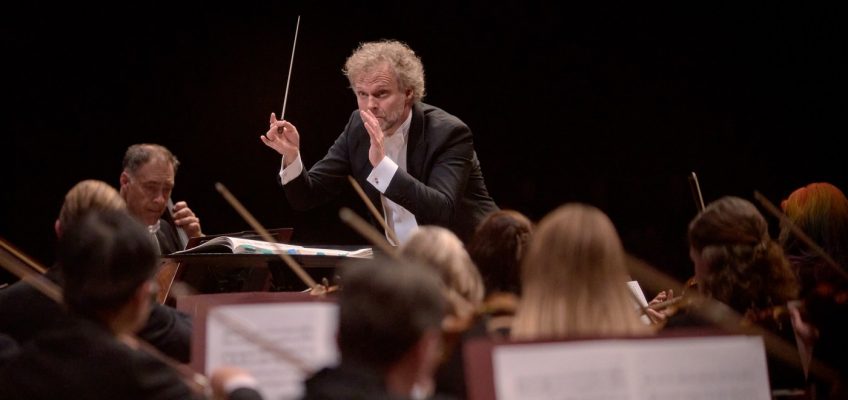Two sumptuous works of poetry sourced the music in the first half of the Minnesota Orchestra’s latest concert, while the music itself became the poetry after intermission. In a program conducted by music director Thomas Søndergård and featuring soprano Julia Bullock, the orchestra delivered a ravishing evening of imagery and dynamism.
Starting out with the relatively obscure “Lamia” Symphonic Poem for Orchestra by Dorothy Howell, based on a John Keats poem, the evening moved to Benjamin Britten’s “Les Illuminations,” Opus 19 bringing Arthur Rimbaud’s extravagant symbolist poetry to life. Then the orchestra performed Gustav Mahler’s Symphony No. 1 in D Major, “Titan.” In its original form, Mahler named the work a Symphonic poem, and the work carried forward that poetic label — ripe with imagery and surprises.
Howell’s “Lamia” was first performed in 1919. The poem inspiring it centers on a serpent who convinces the God Hermes to turn her into a human. In the Minnesota Orchestra’s performance, Howell’s music slithered. The work was full of revelations, from whimsical moments to heroic jaunts, dancing castanets and hallucinatory visions. Following Lamia’s journey from snake to bride to ether, the music was dizzyingly seductive.
Julia Bullock did her own translations for the supertitles of “Les Illuminations,” allowing the audience to follow along on Rimbaud’s outlandish poetry. From mystical cities to Bacchanalian romps, the poetry was vivid and subversive.
“I alone have the key to this savage parade,” Bullock sang numerous times in the song cycle. In the music, Rimbaud’s prose poem lyrics grappled with the artist’s role in making sense of the universe, even at its most surreal.
A Grammy award-winner for her album “Waiting in the Dark,” which she made with her husband, Christian Reif, Bullock demonstrated her majestic voice with the Minnesota Orchestra. Her tone was cozy and enveloping, as she employed use of the space in her body to resonate to the max. Bullock easily handled the moody and dramatic lyrics, and demonstrated her significant range in the work.
After intermission, Søndergård led the orchestra through a formidable presentation of Mahler’s first symphony. The orchestra previously recorded with former director Osmo Vanska in 2019, and before that, were the first orchestra ever to record the First Symphony in 1940, under the direction of Dimitri Mitropoulos.
Brass instruments get some of the showiest moments in the piece, from off-stage playing to dramatic moments where they stood up to play. There was perhaps a stray note here or there coming from the brass section, but their power and showiness made up for it.
The first movement painted a lush pastoral scene, ending in a huge explosion of sound, bursting with speed and momentum. The second movement featured a robust dancing rhythm, similarly wildly flourishing at the end of the movement.
In the third movement, “Feierlich und gemessen, ohne zu schleppen,” Mahler drew on the children’s tune “Frère Jacques,” which moves around the orchestra as a round. After that, the composer shifted into the sound of an Eastern European folk song. The third movement ended in a hushed whisper, followed by a startling jolt.
Fireworks awaited for the last movement, “Stürmisch bewegt,” as the orchestra shared its tremendous weight and sweeping drama.
Next up
What: Erin Keefe Plays Beethoven
When: 11 a.m. Thursday, March 13, 8 p.m. Friday, March 14
Where: Orchestra Hall, 1111 Nicollet Mall, Mpls.
Tickets: $36-$110
Capsule: Following a tremendous concert with music director Thomas Søndergård and soprano Julia Bullock, the Minnesota Orchestra next features concertmaster Erin Keefe.


Leave a Reply